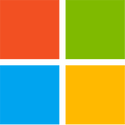
Microsoft Will End Windows 10 21H2 Support for Enterprise and Education in June
Today, Microsoft announced that Windows 10 version 21H2 will reach its end-of-support date for Enterprise and Education editions on June 10, 2024. Following this date, organizations that are still running this version of Windows will no longer receive technical support, security patches, or bug fixes from the Redmond giant. If they seek help from Microsoft in troubleshooting their systems, users of Windows 10 21H2 will get advisory to upgrade to the next supported version, with Windows 11 being in the upgrade path pipeline. Alternatively, they can upgrade to the newer Windows 10 version 22H2, which will receive support until October 14, 2025. It's important to note that support for the Home and Pro editions of Windows 10 21H2 has already ended in June 2023.
The end of support applies to all variants of Windows 10 21H2, including Enterprise, Enterprise multi-session, Education, and IoT Enterprise. Businesses and schools still utilizing Windows 10 21H2 should plan their upgrades promptly. However, they may face challenges as Windows 11 has higher system requirements compared to Windows 10, such as requiring a UEFI BIOS, Secure Boot, DirectX 12 compatible graphics, and a TPM 2.0 security chip. While the Enterprise and Education editions have somewhat relaxed specifications, meeting all these criteria may necessitate hardware upgrades for some organizations, in addition to the operating system migration. If not possible, some organizations may go the Linux-based route of installing lightweight operating systems to keep their PC's lifecycle running.
The end of support applies to all variants of Windows 10 21H2, including Enterprise, Enterprise multi-session, Education, and IoT Enterprise. Businesses and schools still utilizing Windows 10 21H2 should plan their upgrades promptly. However, they may face challenges as Windows 11 has higher system requirements compared to Windows 10, such as requiring a UEFI BIOS, Secure Boot, DirectX 12 compatible graphics, and a TPM 2.0 security chip. While the Enterprise and Education editions have somewhat relaxed specifications, meeting all these criteria may necessitate hardware upgrades for some organizations, in addition to the operating system migration. If not possible, some organizations may go the Linux-based route of installing lightweight operating systems to keep their PC's lifecycle running.
